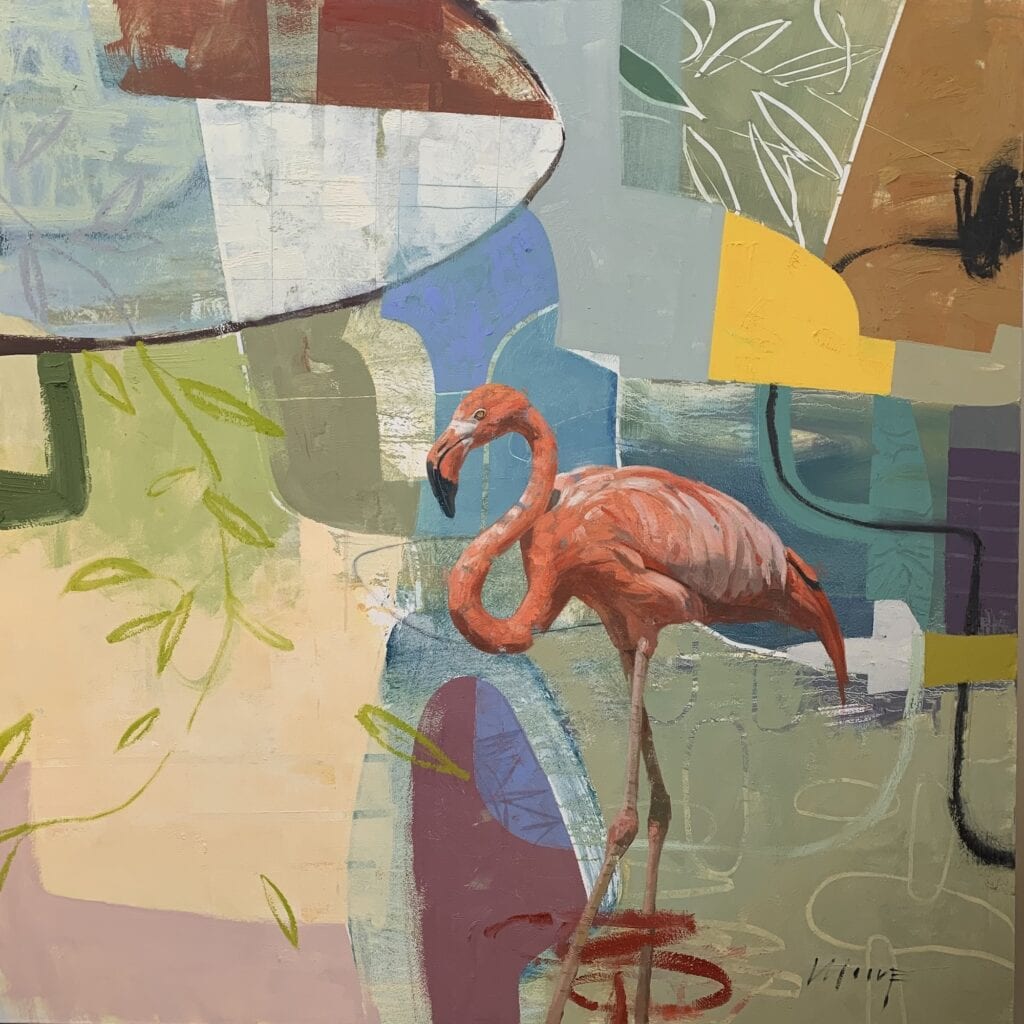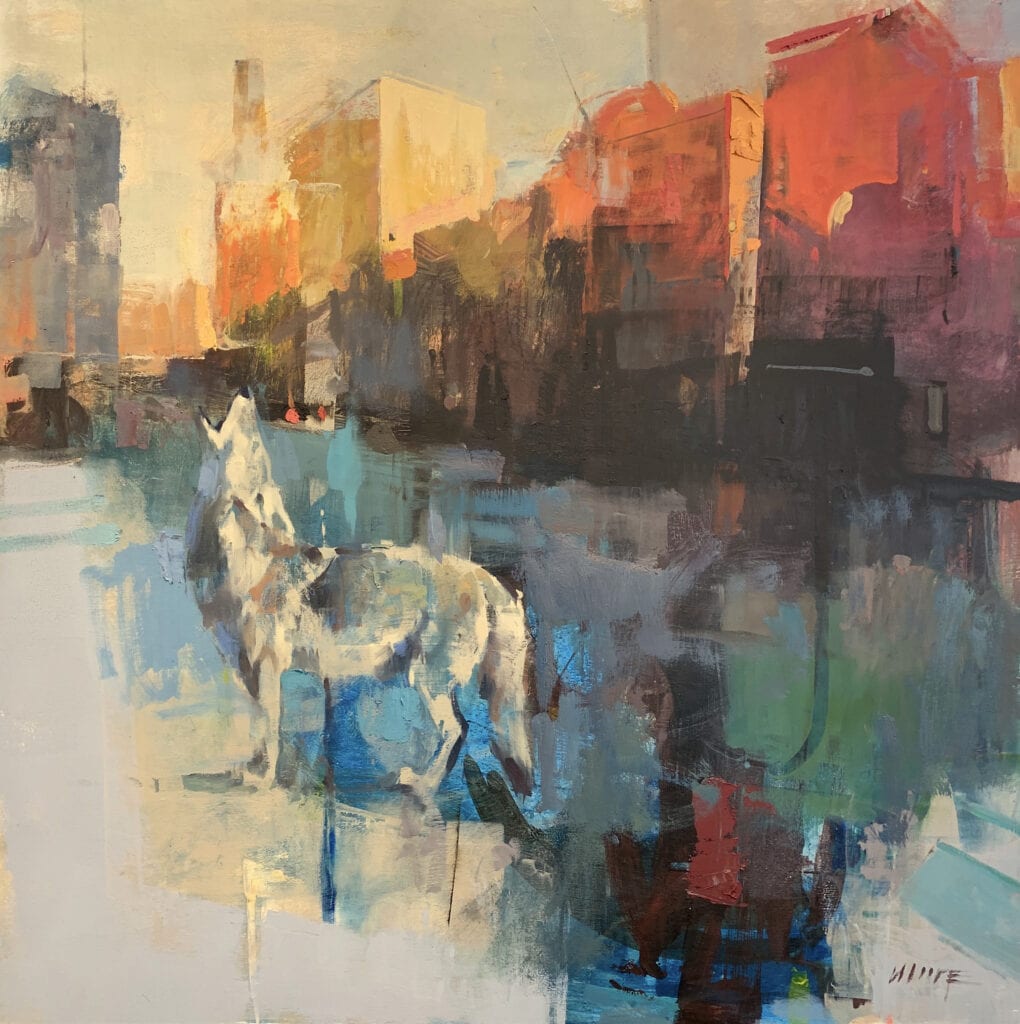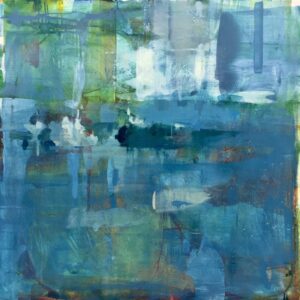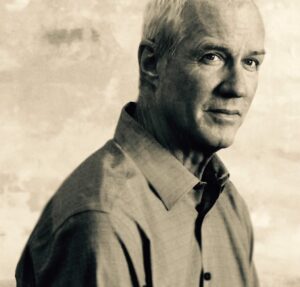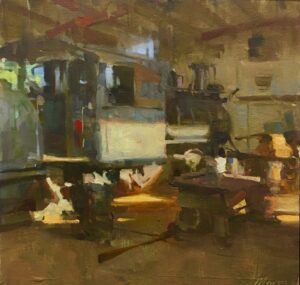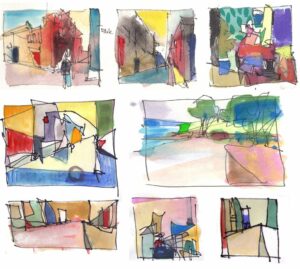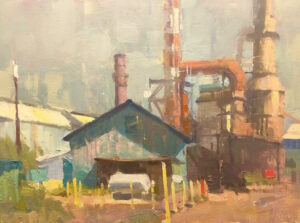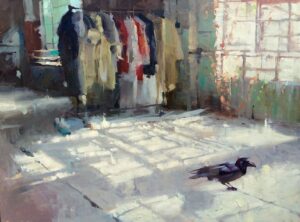Did you know that OPA has been sharing artists’ blog posts for over ten years? We have an extensive collection available to the public on our website. This summer, OPA will be taking Deep Dives into our archives and sharing our favorite posts from years past. Please enjoy this Deep Dive by Larry Moore.
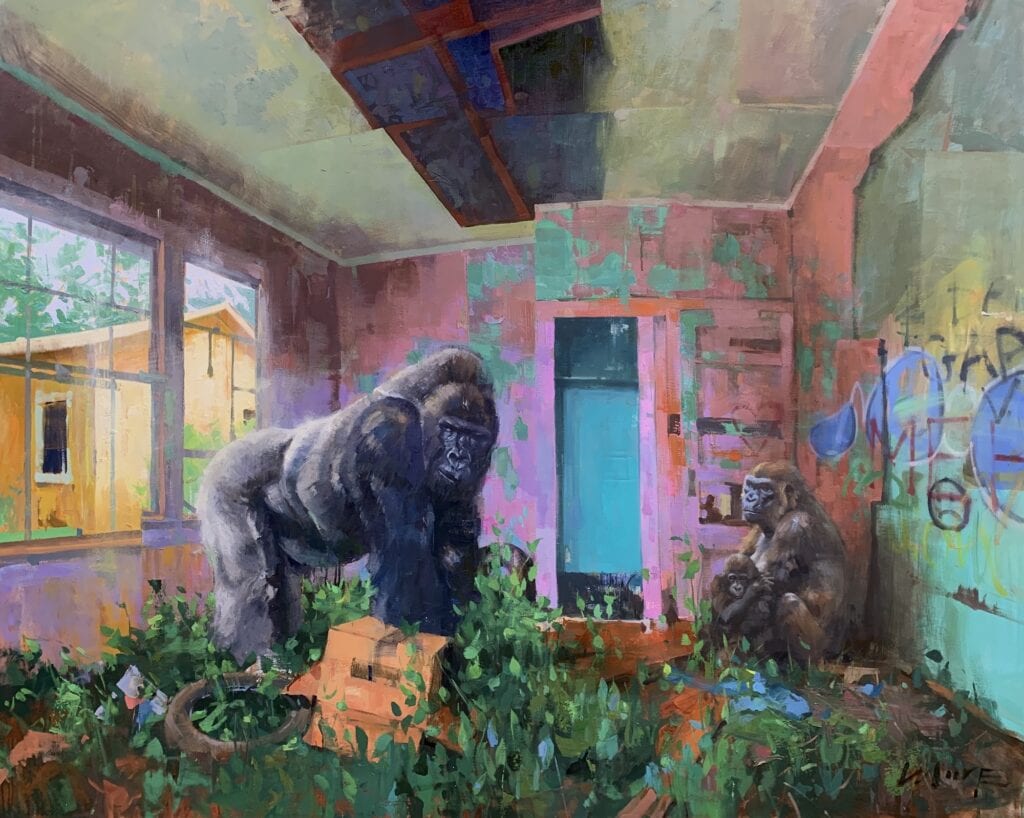
48″ x 60″ – Oil on wood
The lessons I learn from abstract painting come into my representational work and vice versa. Hierarchy, eye flow, juxtaposition, edge, mark making, color and shape resonance, and variation, all apply to both methods of expression.
I have heard it said by more than a few realist artists that they have no connection to abstract art. It is not their thing, they do not get it, it is not real art, etc. Everyone is entitled to their opinion, but I believe that some of these artists are missing out on addressing a key component of individuality in painting: Trust. I teach abstract painting for this very reason.
The goal is not to convert realist painters into abstract ones, but to help artists think about what paint can do if they let it by employing dynamic symmetry, hierarchy, division of space, edge, paint handling and color relationships without basing it on a known source. Painting abstractly has helped my realist work grow in leaps and bounds. And to date, after 25 plus years of teaching, no one has jumped ship from their existing path, they expand their visual language and take the lessons to fold back into their process.
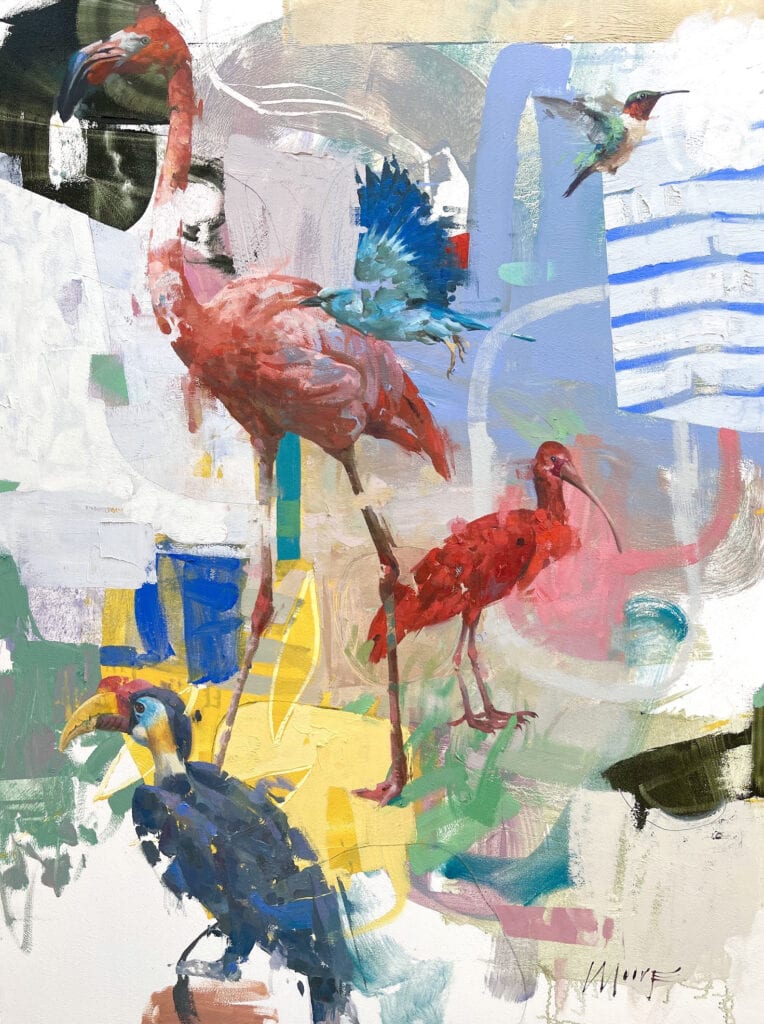
48” x 36” – Oil on wood
My process starts with the abstract and then I figure out what and where the animals go. It’s the same as establishing a figure on the canvas and painting around it, just in reverse.
To build trust in one’s own process is to enable the unique voice of the artist. This voice is comprised of some combination of the key characteristics of painting: intent, drawing, value, color, edge, paint handling, mark making, composition, line, narrative and about 10 other devices in the painter’s tool kit. That is why there are so many wings at the Metropolitan Museum of Art — lots of unique voices in art equal lots of wings at the museums. And who do we go see when visiting such places? Those artists who exhibit that trust, that faith in their own vision, the pioneers, the masters of hand and medium. We seek those who are empowered by authenticity.
I mean, let’s face it, if everyone painted the exact same way, it would be pretty dang boring.
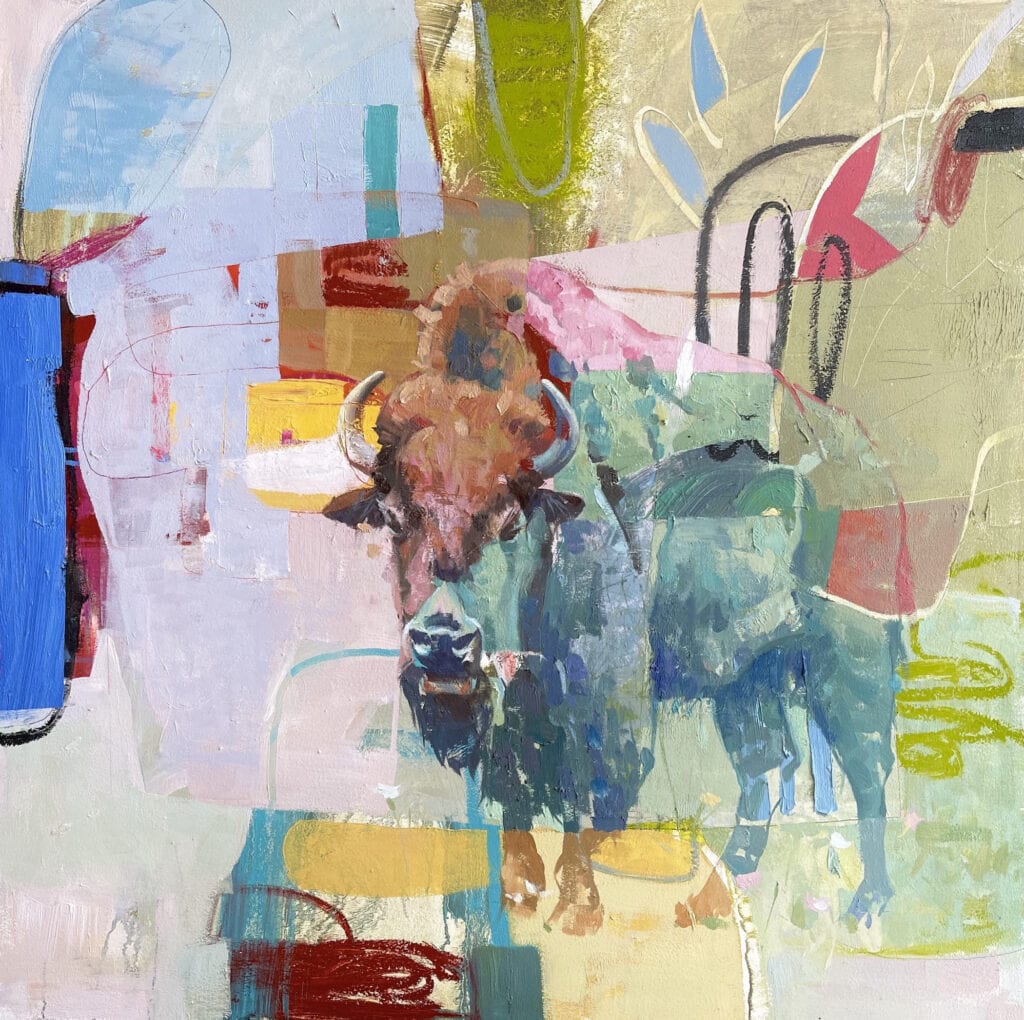
40” x 40” – Oil on wood
In the past my work involved a lot of planning in the form of sketches and studies. Now I have no idea where they will go or even which animals I’ll be using, of if I’ll be using any at all. It makes each day exciting and I look forward to seeing what shows up.
The key to building trust is to venture out past the comfortable known areas of process and concept and hang out on the thin branches for a while. You would think it would be easy for artists to do this. What is the worst that could happen? But, surprisingly, it is not easy. The realist regimen incorporates a series of control measures to ensure a fair amount of accuracy: get your drawing right, get your values right, put something on the thirds cross-hairs, mix the paints just so… all to beautiful effect. Control on the front end.
Abstract painting is that process, only backwards. The control is on the back end. Which means higher risk and higher failure rates, and that can be uncomfortable. But the process of doing, even on a small scale, teaches an enormous amount about what paint can do independent of subject or content in a painting. This can be part of a healthy aesthetic training program, sort of like taking a day to do Argentine Tango if you are more of a Viennese waltz kind of a person.
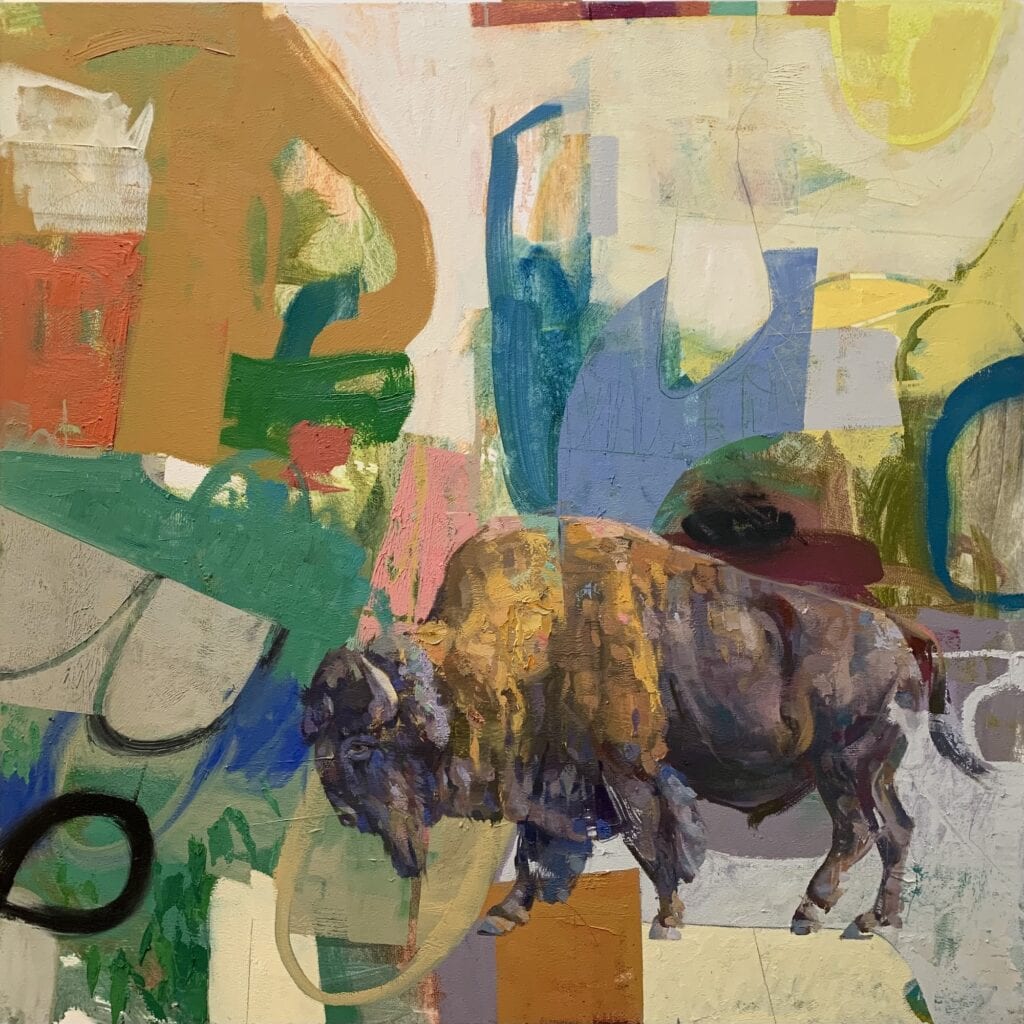
40” x 40” – Oil on wood
These are part of a series I’ve been working on for the last 6 years called Intrusion. Originally the series had an animal or animals in a place, usually an interior, where they didn’t belong. Now the intrusion is in the form of realism in abstraction.
I could rattle off a ton of realist deities whose work dances with the abstract: N. Fechin, C. Anderson, J. Sorolla, C. Monet, J. Twachtman, E.C. Fortune, G. Klimt, E. Dickenson, T. H. Benton, T. Thompson, B. Dugarzhapov and so on. If you put realist painting on the same spectrum as abstract painting, some of these artists are just a little closer to one end than the other.
So, what is to be gained from this kind of exploration?
• You get unstuck in a hurry.
• You get more paint handling ideas.
• You get a better understanding of what the components of painting can do.
• You get more adventurous compositional ideas.
• Your creative thinking skills get a workout.
• Your critical thinking skills get a workout.
• Your significant other will find you more attractive.
• You will loosen up just a little bit.
• Your back won’t hurt as much.
You may not experience all of those, but I promise at least a few will happen.
Let’s say that you are at least moderately intrigued. What next? How does one do this kind of playful study? The doing it part is pretty easy, it is the brain that you have to deal with. There are several secrets to getting your brain to go along with the plan. We are creatures of habit and change is not always easy.
• Give yourself permission to play.
• Spend a few hours making shapes on canvas with a brush and one color. Make compositional shape ideas.
• Change your approach. Change your materials, your brushes, tape canvases into quarters to disable the perfectionist feature.
• Work out from a reference source (see ink and wash sketches), put the reference source away and paint from the sketches. Repeat.
• Mix up some large piles of color that you love and just start moving it around. Come back in an hour or two and work on refining the paint into interesting compositions.
• Hide them away for a while. Be like Dr. Frankenstein and keep your creations in the cellar.
If you ever feel a little stuck or bored with yourself, this is as good a cure as I have found. And don’t worry, you will not suddenly start wearing a rainbow wig or anything weird. Trust me, you will learn something new about yourself, and may even grow as an artist.
